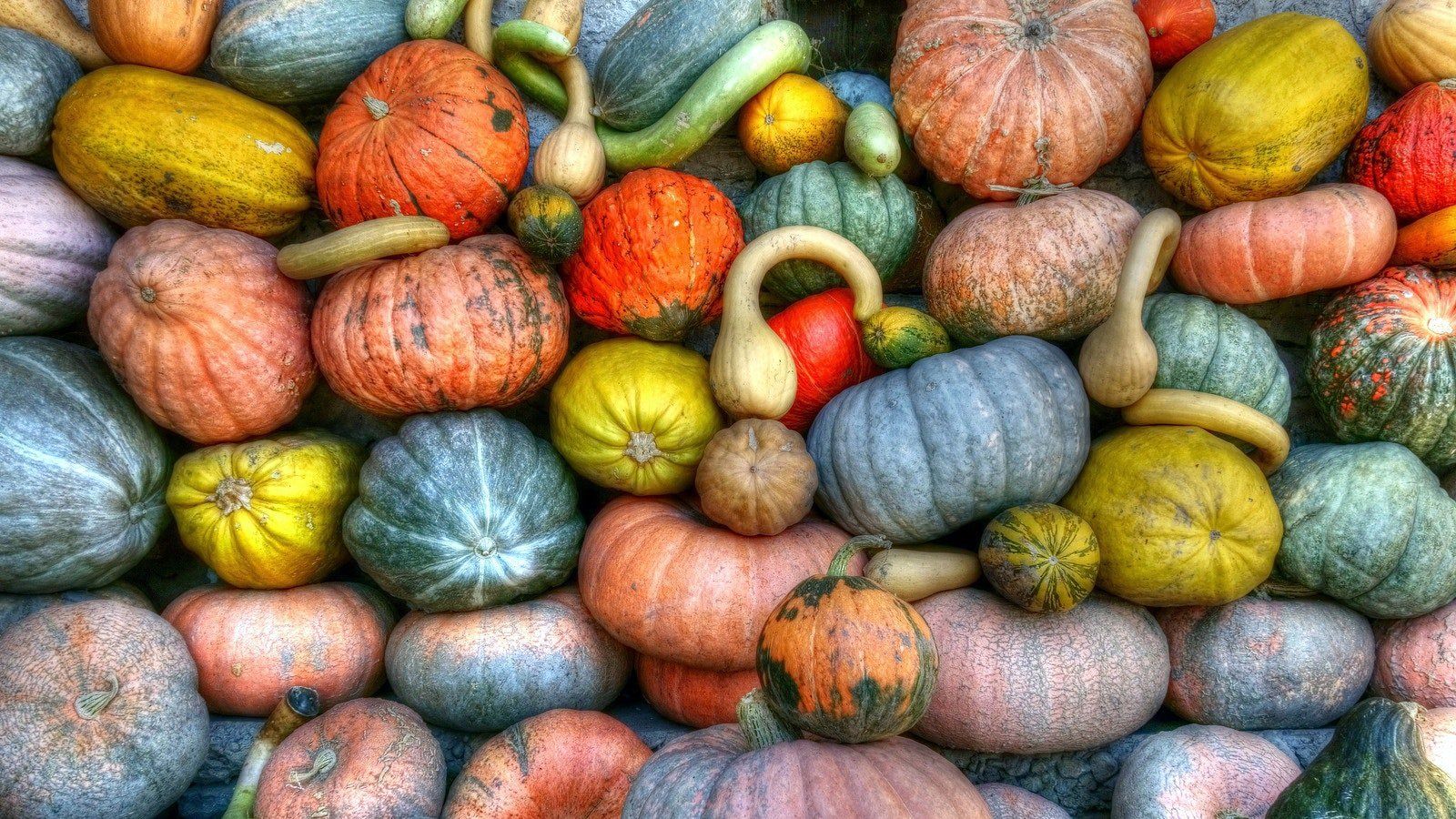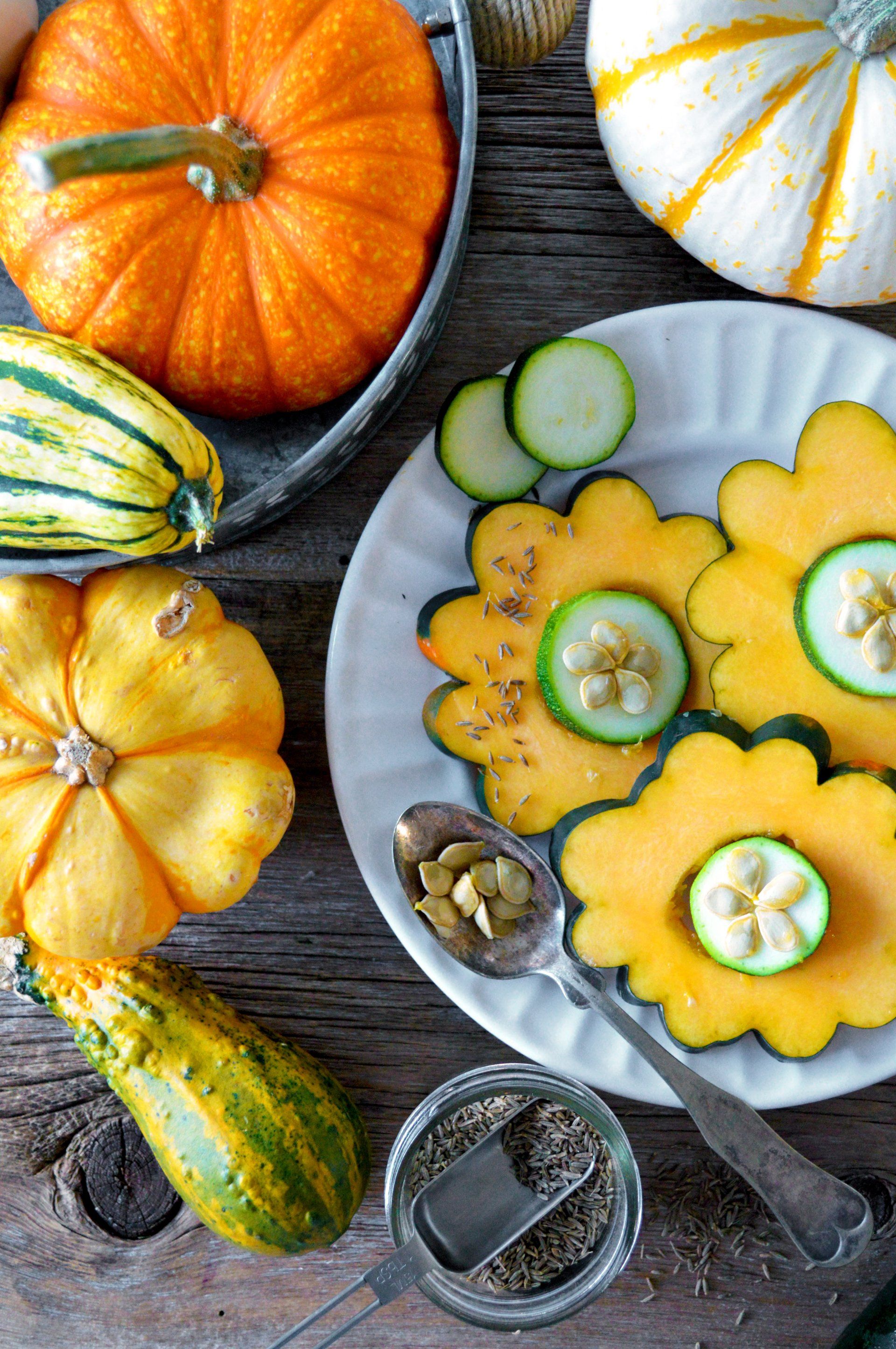Quick Guide to Storing and Preparing Winter Squash
All members of the squash family are from the genus Cucurbita and are indigenous to Central America. Cultivation of squash in North America dates back at least 8,000 years and has been an important staple food for indigenous tribes ever since.
Winter squash is versatile, nutrient-rich and stores well for long periods of time. If you’re not eating squash, you’re missing out! Even well into winter, gorgeous squashes keep rolling into our markets, so we encourage you to come in and try something new.
While a storage temperature of 45-55 degrees is ideal for virtually all squashes, the length of time different varieties can be kept varies quite a bit. Some squashes actually need time to mature or ‘cure’ after they’re picked (to maximize flavor and texture) while others are ready for eating straight off the vine.

ACORN
The fruits of acorn types will have a dark-orange “ground spot” when mature. Fruits can be consumed at harvest, and eating quality is best within about 10 weeks.
SPAGHETTI SQUASH
Spaghetti squash can be consumed right away after harvest and will store only about 10 weeks. So when you see these tasty, butter yellow beauties in our markets, snatch them up while you can!
A note about prep: A spaghetti squashes holds a lot of moisture, so it is best baked or roasted rather than steamed. Slice squash in half either lengthwise or vertically, and scoop out and discard the inner seeds and pulp. Rub olive oil lightly around the interior and roast cut side down until a fork easily pierces the skin. Cool and separate the spaghetti-like strands before using in a recipe.
DELICATA & DUMPLING
The fruits of these types, like acorn squash, often have an orange ground spot when mature. Fruits can be consumed fresh from the vine, and eating quality is best within 3 months of harvest.
A note about prep: When preparing delicata, don’t bother peeling them. They are one of the few winter squashes that have skins that are both edible and delicious!
RED-SKINNED HUBBARDS & SMALL KABOCHA
Hubbard varieties such as Red Kuri can be consumed at harvest and will store up to 4 months. Dry, corky stems are a good indication of fruit maturity.
BUTTERCUP & LARGE KABOCHA
Fruits are best after 1–1½ months of storage, but will also store 4–6 months. Dry, corky stems are a good indication of fruit maturity.
HUBBARD & BUTTERNUT
Fruits are best after 1–2 months of storage, and will keep 4–6 months.
A note about prep: If your hubbard or large kabocha seems too difficult to cut, simply drop them onto a hard surface until they split, and then roast or steam the pieces!

Bake or Roast Winter Squash:
- Using a whole 1 to 1 ½ pound winter squash, pierce the rind with a fork and bake in a preheated 350° oven for about 45 minutes.
- Squash larger than 1 ½ pounds should be halved and cleaned, lightly coated with olive oil, and placed cut side down on a baking sheet. Squash is ready when the flesh can be easily pierced with a fork.
- Squash can also be peeled and cut into ½ inch cubes, lightly coated in oil or butter and spread evenly across a baking sheet to roast in a 400° oven for about 15-20 minutes until tender.
- To Boil or Steam Winter Squash: Cut into quarters or rings and steam 20 minutes or until tender, checking every 10 minutes. Boil or mash winter squash just as you would potatoes. Add peeled squash cubes to your favorite soups, stews, beans, gratins and vegetable ragouts.
- Visit our all-organic produce department and get the best of what’s fresh and locally grown right here in the Pacific Northwest!









